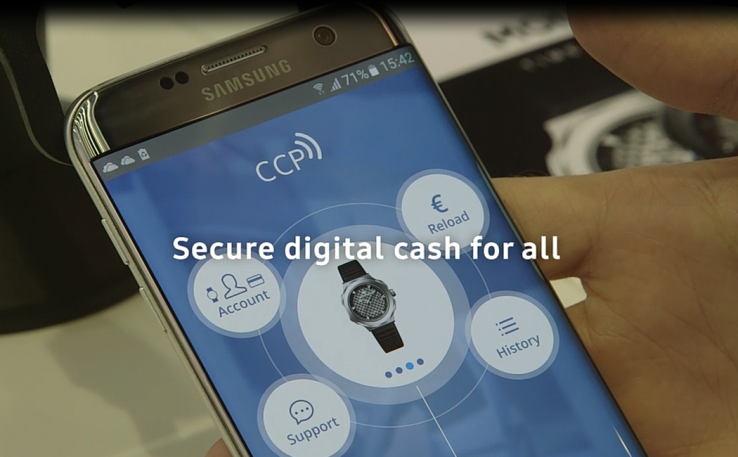

While Samsung’s most high profile contactless payment push is the eponymous Samsung Pay — aka its mobile payments product, which competes with the likes of Apple Pay and Android Pay — the company is today bigging up another approach it’s backing, with the not so catchy name of Contactless Companion Platform (CCP).
The initiative, which is a partnership with Swiss fintech company Smartlink and POS & payment tech provider Ingenico, is aimed at expanding access to contactless payments beyond owners of NFC-enabled smartphones, and even to people who don’t have bank accounts — via a tiny NFC chip that can be embedded into a range of devices and form factors.
Potential payment devices could include anything from a payment card to a rubber wristband, a keyfob or a piece of jewelry. Swiss watchmakers Winwatch and Montfort, for example, both recently showed traditional wristwatches with the CCP chip embedded, and will be implementing the chips into their watches — adding a payment capability you can find on a smartwatch like the Apple Watch to a range of non-smartwatches.
Samsung’s NFC director Jörg Suchy even suggests the chip could be embedded into clothing in future — so you could pay with your sleeve, for example. “Samsung is looking for other wearable manufacturers to get on board and ‘payment-enable’ their devices to make them more attractive to customers,” he said.
“The beauty of the CCP is that wearable manufacturers don’t have to significantly change the design of their devices to incorporate the technology — it’s a case of inserting the tiny chip to enable the device for payment,” Suchy added.
Chipped devices are managed via a smartphone app, where they can be linked to a bank account and credit cards. But they could also potentially be topped up via other methods, including with cash, as part of the mission to widen access to contactless tech. The idea with cash would be the owner of a CCP device takes it into a shop and hands over cash to load onto it (in the same way that London’s contactless Oyster travelcard can function, for example).
And while Oyster cards have been superseded for many Londoners by the transport network adding support for paying with contactless bank cards (which are very common in the UK), an embeddable contactless tech that would enable users to tap to pay without needing to also have a bank account potentially opens up contactless payments to groups that might be excluded, such as children, refugees and the homeless.
“It becomes much easier for countries to progress towards a ‘cashless society’, and governments can get rid of the hassle of coins, reduce the cost of printing money, reduce the threat of counterfeit notes, etc,” said Suchy.
Safety features designed into the platform include the ability to deactivate the payment chips via the app; and time stamps — so a user could, for example, load a small amount of money onto a wristband for an hour while they go running, and then after the time has elapsed any of the money not used is automatically returned to their CCP account.
Samsung said today it will be trialling the CCP in Eastern Europe this April, with 15,000 users — with a view to further expanding in the region thereafter.
Of course, with any payment tech, the platform will need to get device makers on board embedding the chips and establish a payment support ecosystem to enable capabilities such as cash top-ups — hence Samsung working with POS partners for this platform approach.

